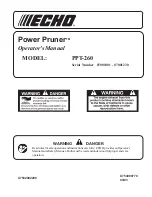
11
Throw-Back
Throwing of pieces in a manner similar to
a kickback.
Thru-Sawing
Any cutting operation where the blade
extends completely through the thickness
of the workpiece.
Trailing End
The workpiece end last cut by the blade in
a ripping operation.
Workpiece
The item on which the cutting operation is
being performed. The surfaces of a work-
piece are commonly referred to as faces,
ends, and edges.
Motor Specifications and Electrical Requirements
Power Supply and Motor
Specifications
WARNING: To reduce the risk of
electrical hazards, fire hazards or
damage to the tool, use proper
circuit protection. Your tool is
wired at the factory for operation
using the voltage shown. Con-
nect tool to a power line with the
appropriate voltage and a 15-
amp branch circuit. Use a 15-
amp time delay type fuse or cir-
cuit breaker. To reduce the risk of
shock or fire, if power cord is
worn or cut, or damaged in any
way, have it replaced immedi-
ately.
The A-C motor used on this tool is a
capacitor start, capacitor run non-revers-
ible type, having the following specifica-
tions. It is wired at the factory for
operation on 110-120v AC, 60 Hz. ser-
vice.
General Electrical Connections
DANGER: To reduce the risk of
electrocution:
1. Use only identical replace-
ment parts when servicing.
Servicing should be per-
formed by a qualified service
technician.
2. Do not use in rain or where
floor is wet.
This tool is intended for
indoor residential use only.
WARNING: Do not permit fingers
to touch the terminals of plug
when installing or removing the
plug to or from the outlet.
Wired for
120V
Wired for
240V
Rated H.P 1-1/2
1-1/2
Voltage
110-120
220-240
Amperes
13
6.5
Hertz
(Cycles)
60
50/60
Phase
Single
Single
RPM
3450
2875 (50 Hz)/
3450 (60 Hz)
Rotation of
Shaft
Clockwise
Clockwise












































